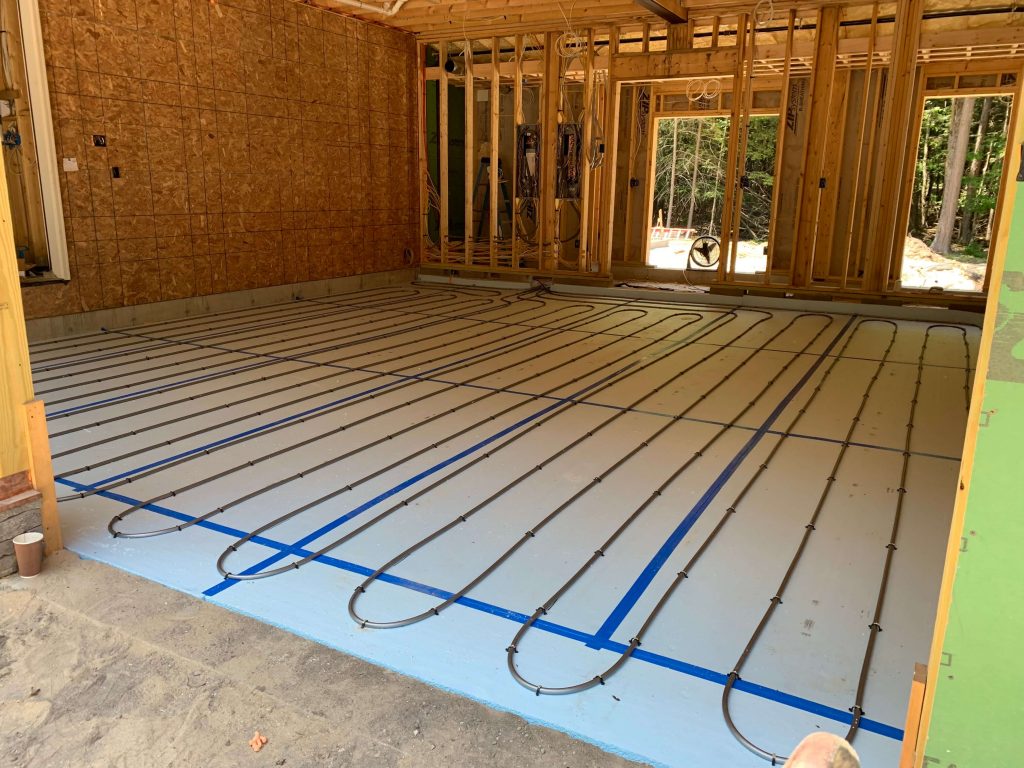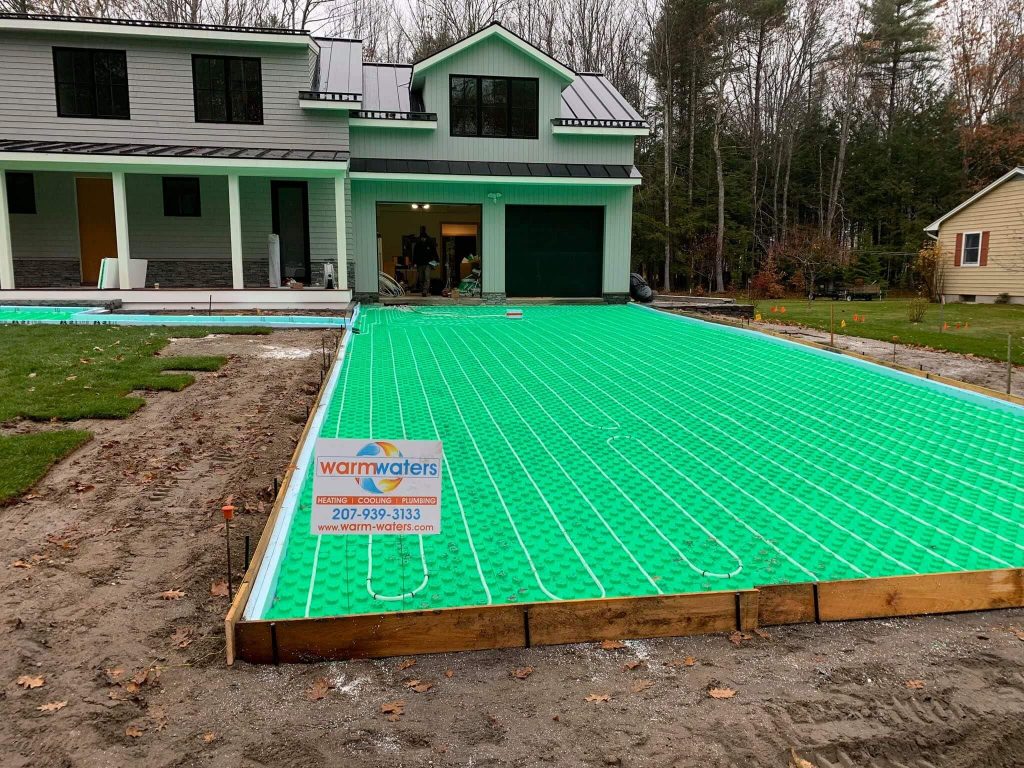Benefits of Radiant Heat
Radiant heat has evolved from a supplemental luxury in a posh bathroom to a very feasible option for heating an entire home. Europe and Asia embraced radiant heating years ago, but now more and more contractors and homeowners in the U.S. have become aware of what sets radiant heating apart. This super-efficient system of heating far surpasses the performance of traditional heating systems in a variety ways that really matter to the average homeowner.
Radiant heat is at least 25% more efficiently than conventional HVAC.
Until recently, radiant heat wasn’t a viable option for the average homeowner, but that is changing. Today, it is a very good option for new construction, additions and remodels, and even older homes being restored. It outperforms other heating systems, delivering a qualitatively home heating experience. It operates silently to create even, all-encompassing, “everywhere” warmth, and does so very efficiently to save homeowners money on annual heating costs.
Radiant heating has a number of advantages, including:

- Quiet, uniform heat throughout the building.
- Continuous heating instead of abrupt starting and stopping of conventional HVAC.
- More efficient than baseboard heating.
- Usually more efficient than forced-air heating because it eliminates duct losses.
- Better indoor air quality for people with allergies or respiratory illnesses because it doesn’t distribute allergens like forced air systems.
- Very quiet operation.
- Maintains humidity in the house for more efficiency and comfort.
- Uses little electricity, a benefit for homes off the power grid or in areas with high electricity prices.
- Can use a wide variety of energy sources to heat the liquid, including standard gas- or oil-fired boilers, wood-fired boilers, solar water heaters, or a combination of these sources.
For many who are used to traditional forced air or hot water heating systems, the perception is that home heating must be hit-and-miss in heating comfort and reliability. We also know that HVAC systems are very expensive, bringing a high annual energy cost. Today, radiant heating means homeowners do have the option to enjoy total temperature comfort at a lower cost.
How Radiant Heat Works
Radiant heating has been around for thousands of years, since before the days of the Roman Empire. These systems supply heat directly to the floor or to panels in the wall or ceiling, providing an even, consistent warmth.
Radiant heating is a system of tubes that are installed under the floors, behind the walls or in the ceiling, and is capable of warming up the entire house. The heat radiating from the tubing naturally warms the room, and all the objects in it, including the floor, walls, ceiling, furniture and people.
The systems depend largely on radiant heat transfer – the delivery of heat directly from the hot surface to the people and objects in the room via infrared radiation. Radiant heating is what you feel from the warmth of a hot stovetop from across the room. Despite its name, radiant floor heating depends heavily on convection, the natural circulation of heat within a room as air warmed by the floor rises.
Can radiant heating be installed in an existing building?
Radiant heating systems can be retrofitted in existing and older homes.
Installation in an existing home can be disruptive because installation requires the floor, wall or ceiling to be torn out. However, any new heating system is a fairly invasive installation process. Of course, it is much easier to install radiant flooring in a new home, where the flooring materials can be installed directly on top of radiant heating elements, and where wall cavities are open for wall unit installation.
Enjoy uniform heating comfort with radiant heat.
There is simply no question that radiant heat provides a higher level of comfort than forced hot air or water boiler systems. Most often installed beneath the floor, radiant heat panels deliver warmth across virtually every square inch of the home. No matter where you go within your home, you always experience the temperature you want. With traditional heating systems, it’s a different story. Designed to operate in a stop-and-start pattern, conventional HVAC dumps hot air into the building, then stops. Minutes later, once the temperature has dipped below a threshold point, the system comes on again, and the cycle repeats. The result is dramatic, uncomfortable temperature swings Radiant heat also concentrates comfort at floor level where you actually feel it, instead of it rising to the ceiling immediately.
Did you know your DRIVEWAY can have radiant heat?!

Radiant heating can also be installed outside your home – yes, even in Maine. If you have outdoor surfaces like driveways, walkways, parking spaces, and other pedestrian areas that need to be protected from dangerous snow and ice in wintertime, Snow and Ice Melt Driveways is a perfect solution!
At Warm Waters, we install Uponor Snow and Ice Melting systems. These products are designed for outdoor use, and utilize radiant heat technology in an exterior application. The results are a snow and ice free surface on the driveway, walkways, and parking areas.
Avoid back-breaking and time-consuming shoveling of snow, and using pollutants to de-ice! Contact us to learn how our installed snow melt exterior systems provide an automatic control system that heats up only when it is needed, day and night.
